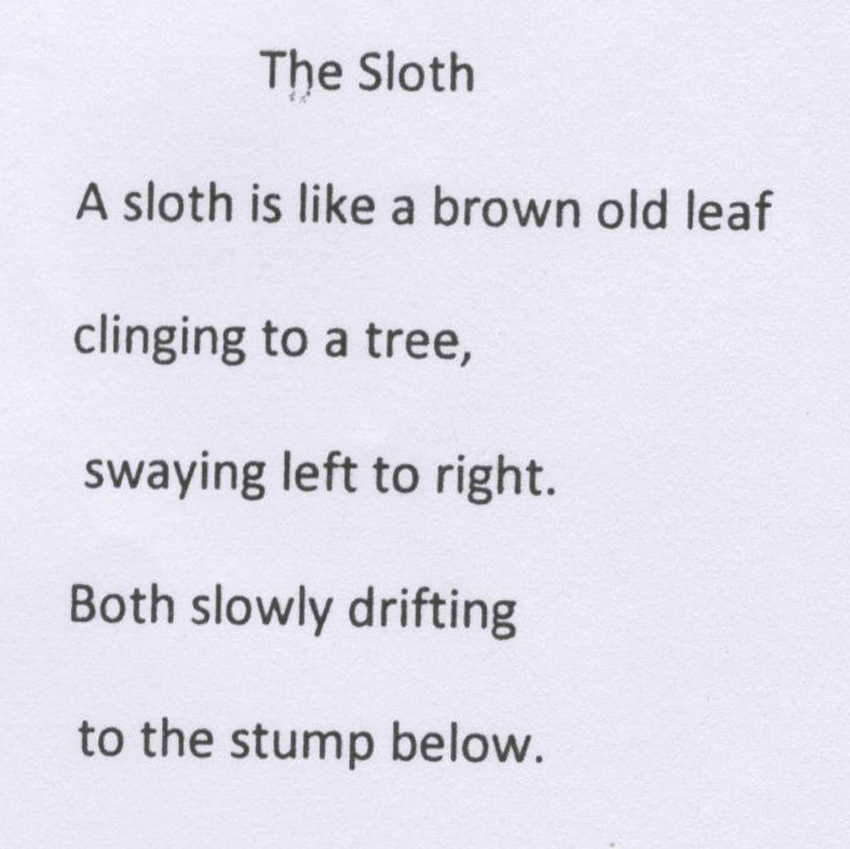2011
SARAH MOOK
POETRY PRIZE RESULTS
K-2 SECOND PLACE
Caterina
Cappelli
Sarasota, FL
 |
|
COMMENTS FROM CONTEST JUDGE MARIE KANE: A note to all finalists: You are to be congratulated on your excellent entries to the 2011 Sarah Mook Poetry Contest. What trouble I had this year in deciding the winners! Because your work was advanced on all levels, my efforts took a longer time than usual to make the final decision. Know that your poems were read with care and attention to detail. I enjoyed every one of them! Sincerely, ------------------------------------------------------------------------------------------------ At first read, this poem of only five lines might not be chosen as a winner; the poem compares a sloth (an unusual animal for a young person to write about) to a brown leaf. However, the poet's talent with visual description, economy of language, line breaks, and word choice give the poem a second place. I was taken by the poem with the first line: "A sloth is like a brown old leaf." This direct and marvelous simile encourages the reader to continue with the poem to see how this could be so. One usually thinks of a sloth as a slow animal - hence the name - but the addition of color and the placement in a tree intrigues. Next the poet describes the sloth as "clinging to a tree." The rather mature verb 'clinging' is an apt description of a sloth's actions, enabling the reader to visualize the animal in a tree. The third line continues the description of the sloth. It sways "left and right," explaining the use of "clinging." Here, the poet alludes to the wind by using the verb "swaying" without giving any indication that it is windy. This is a useful poetic talent; many students might simply say 'it is windy' without visual description. Using suggestive details is one of the marks of an accomplished poem. In the second to last line, action continues. The poet melds the sloth and the leaf: "Both slowly drifting." Like a falling leaf, the sloth also seems to 'drift' to the ground; an imaginative detail that allows reader to see the scene. The last line completes the comparison. Both the 'brown old leaf' and the sloth drift "to the stump below," finalizing the quiet picture painted here. One can compare the sloth to the brown leaf without stating the sloth's color. Line breaks in the poem cause the poem's flow to be uninterrupted; they also slow down the action of the 'drifting' leaf and sloth. Through
verbs such as "clinging," "swaying," and "drifting,"
and use of economic language, this poet offers the reader precise physical
detail to describe this minute, yet visual, scene. Thank you for the privilege of reading your work. Marie
Kane |